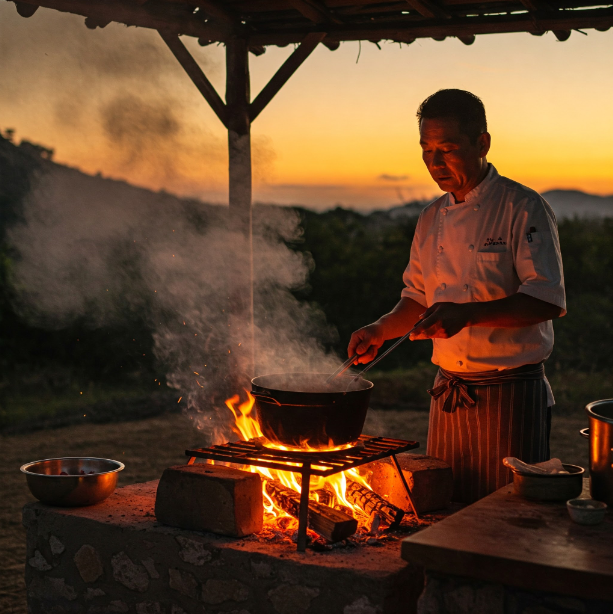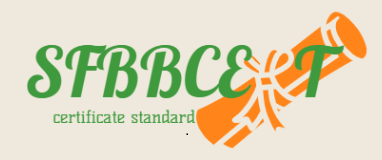
Cooking food over an open fire is a delightful and traditional experience that can bring joyful memories. However, to ensure a safe and healthy cooking experience, it’s crucial to follow proper safety and hygiene principles. In this article, we provide a comprehensive overview of safety tips for cooking over an open flame — covering everything from proper equipment selection and food preparation to preventing fires and food poisoning.
In hot summer weather and during outdoor cooking, the risk of bacterial growth in food increases. Bacteria can transfer from raw meat to ready-to-eat foods, even in meats that are not fully cooked.
In fact, grilled foods can become contaminated quite easily. Food poisoning is not just a temporary digestive problem — it can lead to serious and long-term illnesses. These issues are caused by various bacteria, including:
Campylobacter
Salmonella
Listeria
E. coli
By following good food hygiene practices — such as handwashing, thoroughly cooking meat, and preventing cross-contamination — we can significantly reduce the risk of food poisoning. Below are the steps you should take before, during, and after a barbecue to help prevent foodborne illness:
Preparing the Grill
Before lighting your grill, check and clean it thoroughly. Wash your hands and ensure all utensils and surfaces are properly sanitized. Hygiene practices help eliminate bacteria from hands, equipment, and surfaces and prevent the spread of harmful bacteria to your food. To minimize the spread of microbes:
Wash your hands with warm water and soap before and after handling raw meat or fire.
Keep foods in sealed containers in a cool place until cooking begins.
Do not mix utensils used for raw and cooked foods. Use separate cutting boards for raw meat and vegetables or fruits, or wash boards thoroughly between uses.
Do not wash raw meat or poultry, as this can spread bacteria to your hands, utensils, and work surfaces.
Cleaning the Grill
If your grill is kept outdoors, inspect and clean it before use — even if you’ve recently used it.
Make sure it is dry and free from debris. Cooking methods and cross-contamination prevention are critical during open-fire cooking. There’s a risk that meat may not be fully cooked or may become contaminated.
Thawing Meat
Frozen meat often does not cook thoroughly over fire. It’s best to defrost meat in the refrigerator the night before. Make sure juices from thawing meat do not leak onto other foods. Place it in a container with a rim to prevent leaks. You may also use a microwave to defrost meat before cooking. Once thawed, cook and consume within 24 hours.
Check Expiration Dates
Use food items before their expiration or “best before” dates.
Prevent Cross-Contamination
Cross-contamination occurs when raw foods come into contact with cooked foods, utensils, or eating surfaces. Prevent this by:
Keeping raw meat separate from ready-to-eat foods.
Using different cutting boards and utensils for raw and cooked items.
Washing your hands after handling raw meat and before touching cooked foods.
Never reuse marinades used on raw meat.
Ensure juices from raw meat or fish do not come into contact with cooked foods.
Cooking with Charcoal
If using charcoal instead of a gas grill, ensure the coals are fully heated before cooking. They should glow red and have a powdery gray coating.
Pre-Cook Meat in the Oven
You can partially cook meat in the oven before finishing it on the grill. This reduces cooking time but requires more preparation.
Properly Cook Grilled Meat
The temperature and duration of cooking are vital to killing harmful bacteria.
Different meats require different approaches:
Red meats like steak can be served rare, medium, or well-done — as long as the outside is sufficiently seared.
Poultry and ground meats (e.g., burgers, sausages, kebabs) must be fully cooked due to the risk of bacteria throughout the meat.
Turn meat regularly on the grill to ensure even cooking. Keep raw meat separate from cooked meat on the grill and designate a separate area for cooked items.
Always check that:
The entire piece is hot throughout.
The thickest part is not pink or undercooked.
Meat juices run clear.
Avoid Undercooked Burgers and Sausages
Grinding meat spreads surface bacteria throughout the product. If burgers or sausages aren’t thoroughly cooked, these bacteria may survive. This applies to all minced meat products, regardless of quality.
Serving Grilled Foods
Use separate plates for raw meat, cooked meat, and ready-to-eat foods like salads and desserts. Keep chilled foods in the fridge until needed and store perishable items away from heat and sunlight until served.
Managing Leftovers
If you have leftover grilled food:
Cover it and allow it to cool at room temperature quickly.
Within 1–2 hours, place it in the refrigerator or a cooler with ice — especially in warm weather.
Bring leftovers inside promptly to avoid sun, insects, and animals.
Eat refrigerated leftovers within 48 hours.
Reheat only once and ensure food is steaming hot throughout before serving.
You may freeze leftover grilled food to prevent waste.
If you’re unsure about the safety or hygiene of your barbecue equipment, consider another method of cooking to avoid the risk of foodborne illness.
Final Notes
Following these hygiene and safety guidelines — especially when cooking outdoors or over an open fire — plays a crucial role in preventing food contamination. The SFBBCERT standard can serve as a reliable guide for implementing these practices in food businesses and can help improve restaurant hygiene and customer satisfaction.
Fire Safety and Food Allergies
Fire safety is one of the most important concerns when using a grill. Grill fires can be extremely dangerous. Lastly, before preparing food for others, always inquire about their food allergies or sensitivities. For more information on preparing safe meals and avoiding cross-contamination of allergens, refer to our article: Guide to Food Allergies and Sensitivities.

No comment